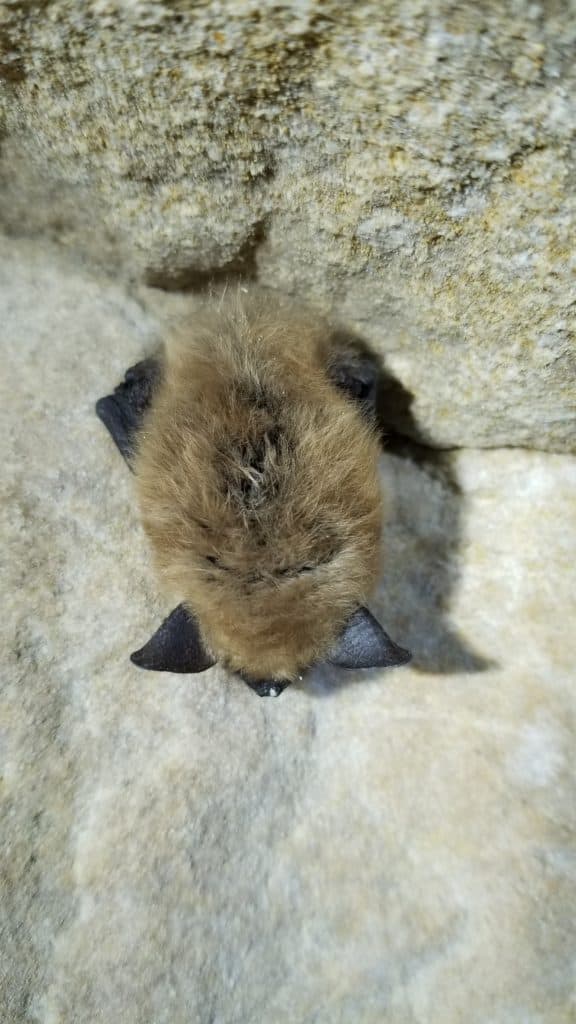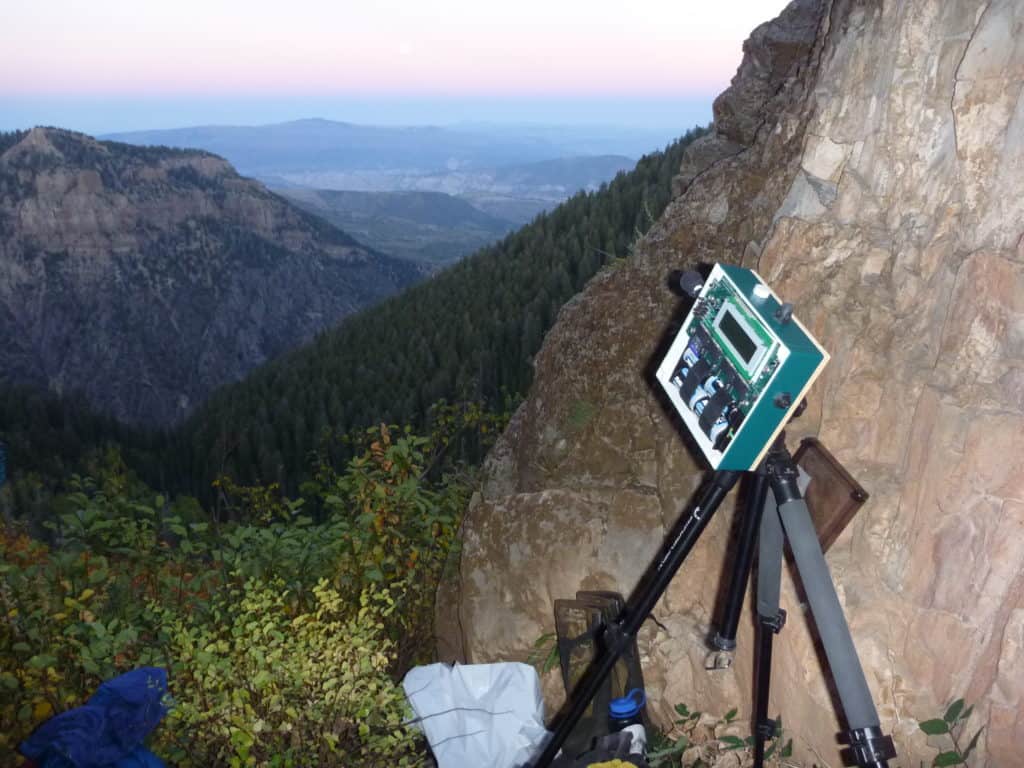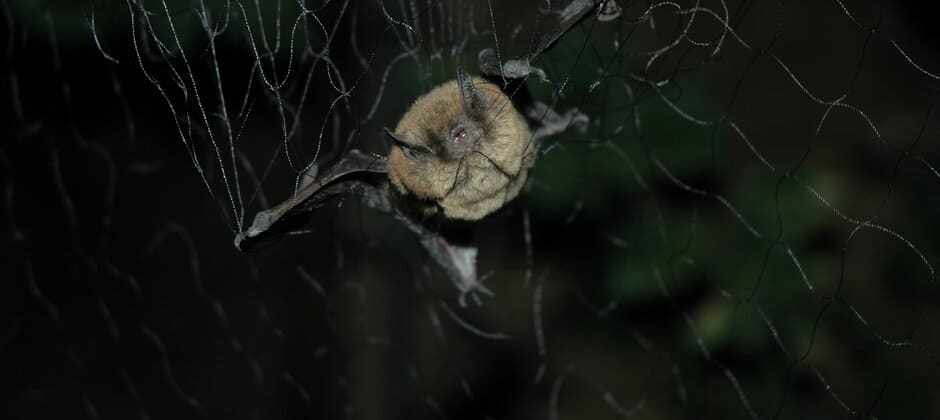Share this article
Colorado bat swarms may be vulnerable to white-nose syndrome
As humans continue to social distance to stop the spread of COVID-19, swarms of bats in Colorado haven’t taken the hint that gathering together could facilitate the spread of a deadly bat disease, white-nose syndrome, in the state where it hasn’t yet been documented.
“When the fungus arrives, this is a way we think the disease could spread,” said Daniel Neubaum, a wildlife biologist with Colorado Parks and Wildlife.
Neubaum and his colleagues began to think about ways to prepare for the arrival of white-nose syndrome in Colorado in 2010 as the fungal disease was spreading westward in the United States. Researchers in states that had outbreaks of the pathogen had told the team about the importance of obtaining baseline data on bat populations and behavior in order to better manage bats when the disease did arrive.

A western small-footed bat (Myotis ciliolabrum) on a wall in a cave. Credit: Daniel Neubaum
The bat species in Colorado are a little different than those in the East, Neubaum said. Many bats in Colorado, like the little brown bats (Myotis lucifugus), hibernate by themselves in rock crevices rather than together in the hundreds and thousands in large caves.
But Colorado bats do tend to swarm in the autumn, and Neubaum and his colleagues thought this behavior might present a potential avenue for white-nose syndrome to spread through populations.
Starting in 2011, they set out to gather more data on bats’ swarming behavior.
In research published recently in Ecology, the team used both on-the-ground observation and infrared cameras to attempt to count the number of bats that swarmed around several caves. The observations showed multiple bat species that are vulnerable to white-nose syndrome interact with each other while swarming, breeding in caves and through other activities. Roosting and crawling along surfaces might also expose the bats to the fungal disease if an infected individual has been in the same spot recently, Neubaum said.

High frequency acoustic recording equipment was used to identify species present.
Credit: Daniel Neubaum
The researchers also wanted to see if bats from one cave might interact with those at other locations, which would clue them in to how quickly the disease might spread. They captured several bats and attached small glow bands, similar to the bracelets kids wear, with different colored lights corresponding to the cave where they were marked. Observation revealed that the bats did indeed flit between several different caves.
“These bats are coming from a lot of different places on the landscape,” Neubaum said.
While some researchers believed that the relatively solitary hibernation strategies of some species in Colorado might buffer them from larger impacts of white-nose syndrome, he said these observations show that the bats’ lack of social distancing in these swarms likely still makes them vulnerable despite lower transmission rates.
While white-nose syndrome still hasn’t been confirmed to be found in Colorado, Neubaum said research like this can help show wildlife managers how to combat the spread of the disease if and when it enters the state. Bats in areas with large swarms might be treated with probiotics, for example. Managers can also take a proactive approach by vaccinating them against white-nose.
Header Image: A long-legged myotis (Myotis volans) bat trapped in a net as part of research. Credit: Daniel Neubaum








